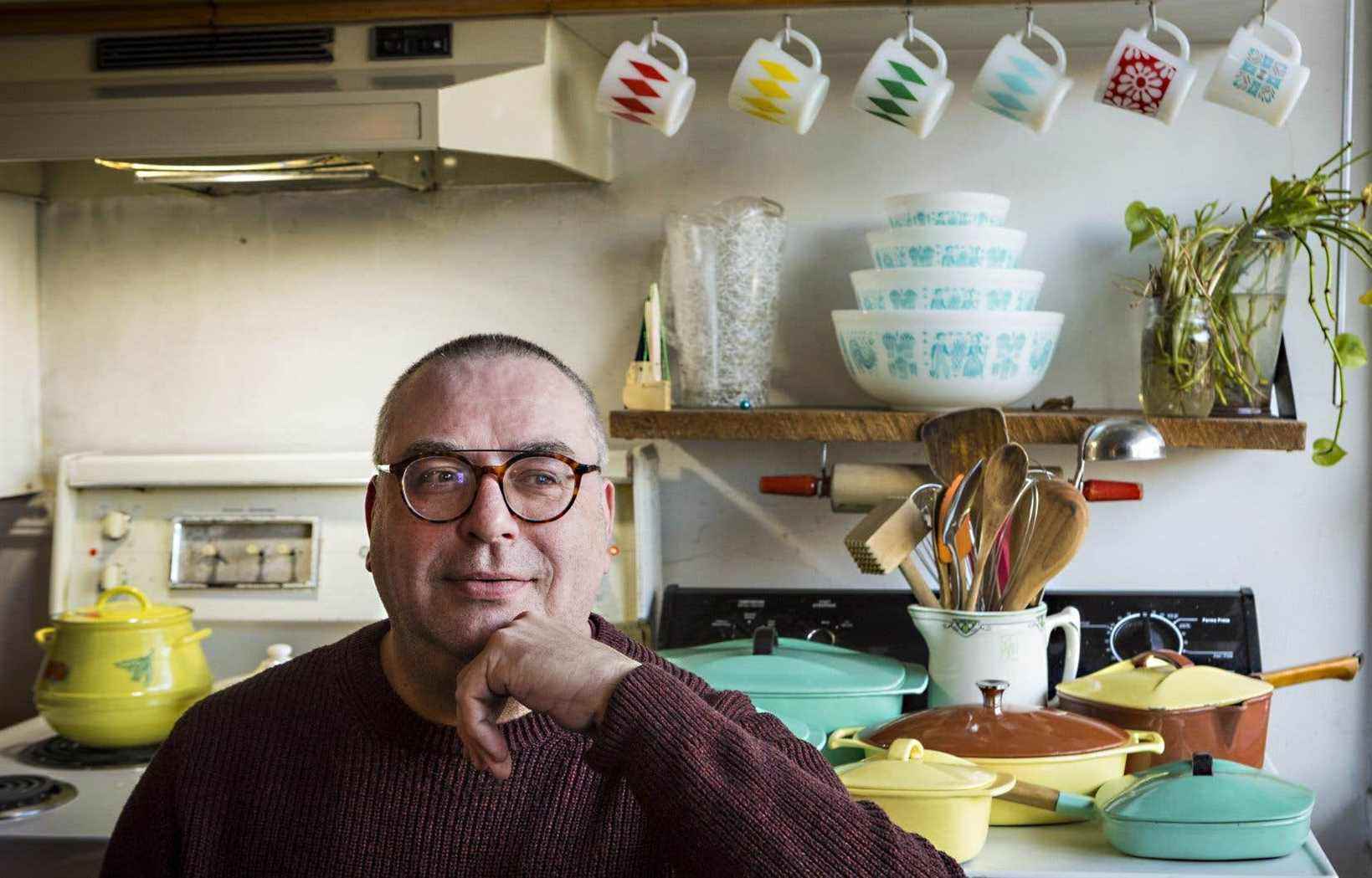Some will tell you that steaks, braisings and grilled cheese are best when prepared in a cast iron skillet. This kitchen accessory, almost indestructible, is experiencing a resurgence in popularity in the kitchen, in line with the movement of slow food.
Benoît St-Martin swears by these stoves, whether they are in raw cast iron or enamelled cast iron. In his kitchen, he has about fifty pieces of cast iron: from the large-capacity casserole dish to the miniature pan. “I don’t have any pieces that are too precious for me not to use them,” he says, seated at his kitchen table, surrounded by the treasures he has found in flea markets and shops selling second hand items over the years. They each have their own uses: sauces, soups, chicken breasts, grilled cheese and risottos.
It does have a few classic non-stick pans and some stainless steel ones, but they collect dust in the cabinets. Nothing beats a cast iron stove, he says.
He explains that he succumbed to the melting ten years ago. Originally, he collected Pyrex dishes, in vogue from the 1950s, after inheriting dishes from his late mother. One day, however, he discovered some pretty L’Islet turquoise casseroles at Salvation Army which he paid $ 25 for three pieces. The L’Islet foundry, which made wood-burning stoves from the 1910s, also sold enameled cast iron kitchen accessories which are in great demand today, having become scarce after production ended in the 1970s.
Since then, Benoît St-Martin has enlarged his collection by scouring the flea markets and stores selling second-hand items. And his passion isn’t limited to cast iron and Pyrex items, he also has an array of retro mugs, zinc molds and copper pans.
In 2016, he created a Facebook group called “We like cast iron! »For lovers of cast iron objects who exchange tricks, show their finds – old stoves and cast iron objects from another era – and present the dishes they simmered.
The art of seasoning
Chef and professor at the Institut de tourisme et d’hôtellerie du Québec (ITHQ), Stelio Perombelon, acknowledges that cast iron is gaining popularity after being shunned for years. “When the cast iron pan was out of fashion 25 years ago, everyone got rid of it. There are good quality cast iron stoves that have gone to trash cans or secondhand markets, ”he laments.
However, it has several qualities, he says. Durable, it can be passed from generation to generation if properly maintained, and it retains heat well. But its weight is a disadvantage in the kitchen.
“The cast iron skillet takes learning,” he admits. A rough cast iron pan should be “seasoned” so that food does not stick to it. To do this, you have to clean it thoroughly, coat it with a light layer of oil and place it in the oven at 450 degrees for an hour and repeat this operation a few times, depending on the result. A well-seasoned pan will cook eggs without sticking and it will not rust.
“Everyone makes the same mistake: they set the fire too hard and it sticks,” says Benoît St-Martin. “It’s a myth that cast iron heats up evenly. It is not, but when it is hot it retains the heat for a long time. “
Stelio Perombelon warns that soap should not be used to clean cast iron pans in order not to damage the seasoning. But Benoît St-Martin has no such scruples. “Seasoning is not afraid of soap. If on Saturday night you made cod and cook eggs on Sunday morning, I just like washing it with soap, ”he says.
Iron intake
Does cooking with cast iron increase iron intake in the diet? Chemist and trainer in hygiene and food safety from the ITHQ, Erik Ayala Bribiesca maintains that like other kitchen tools, melting can allow the transfer of metals into food, but the quantities remain very limited, he indicates. . “Just because we eat a steak cooked on a barbecue does not mean that we have just eaten a nail. We are talking about a microgram. They are really traces. “
The fact remains that in some countries, he relates, cast iron blocks are dipped in simmered dishes precisely to promote the transfer of iron into food. “It is a strategy to try to stop anemia”, says the chemist without recommending adopting this practice.
Is the cast iron skillet safer than non-stick Teflon-type frying pans? Mr. Ayala Bribiesca recalls that since 2013, perfluorooctanoic acid (PFOA, or PFOA in English), suspected of causing cancer, is no longer used in the manufacture of stoves. Overheating a pan of this type can result in noxious fumes, so it is best to use it on low heat.
